Safety & energy-efficiency in large reptile enclosures
I have owned several types of exotic lizards and snakes. Currently, I have two boa constrictors; a male and a female. The male is about 6' and the female is 9' and I adopted them about 4 years ago. So, they're big, they're heavy and they are living in a pen that I built for Savannah Monitors several years ago.
I wanted to provide them with better light and heat while using less power and gaining more control of the system.
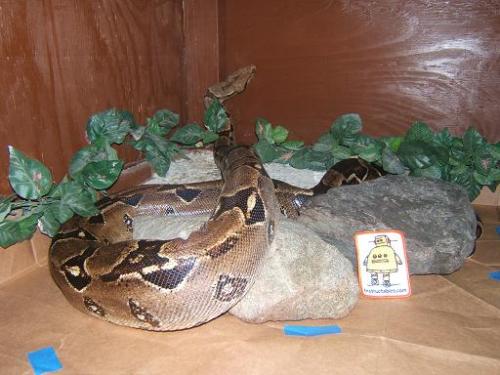
A little about my enclosure
The snakes are in a pen that I built several years ago. The enclosure is a 4' x 4' x 4' cube on top of a 2' x 4' x 4' base. The enclosure is divided into two stories to house the two snakes and was expertly painted by my wife. I don't put them together at all because I don't want any baby snakes.
Originally, two 60 or 75 watt reptile bulbs are what I used to provide the heat and light. So for 12 hours a day, I'm using 120 watts for the lights.
Over the past year, I have tried to reduce my all-around electricity consumption in the house and the snake pen is something I wanted to address as well.
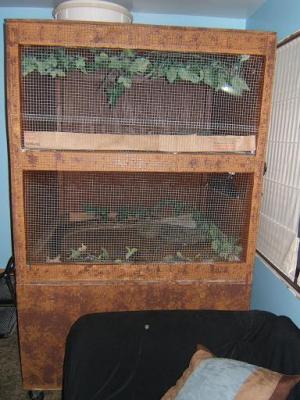
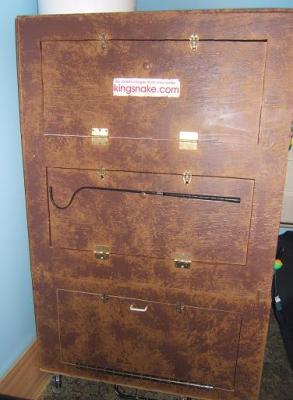
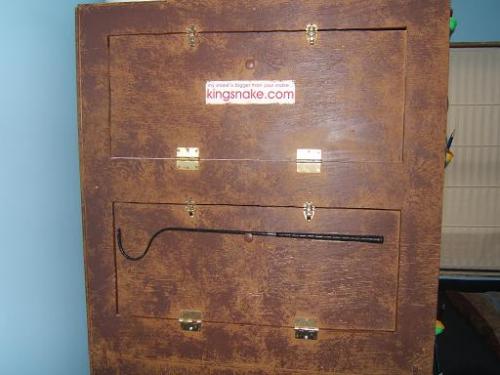
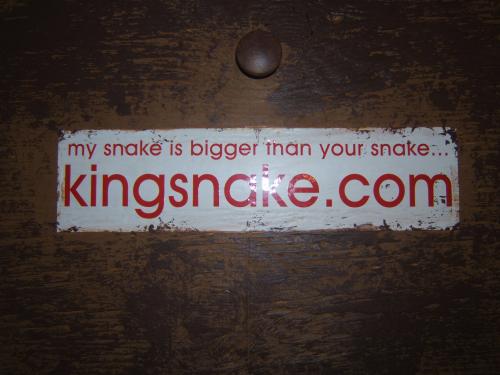
Replacing the lights
The incandescent lights are eating up a lot of energy. The rest of my house has energy-saving compact fluorescent lights, and now CFL's are being made specifically for reptile enclosures. So, first thing to do is replace the incandescents with CFL's.
The two 60 watt lights are gone and I replaced them with two 20 watt CFL's. This means, I'm using 40 watts to light the enclosure now.
Plus, CFL's last longer than incandescent bulbs which means that I will have to replace the lights less often which will not only lead to energy savings over the long-term, but will also reduce the amount of money I have to spend on lights.
For an idea of the money I spend to replace lights, I have to replace each bulb roughly every two months which winds up being 12 bulbs per year. I pay about $9 per bulb from the pet store ($9 x 12 bulbs = $108/yr.). I bought these two CFL's online for $34 and I'm willing to gamble that they will last a lot longer than two months.
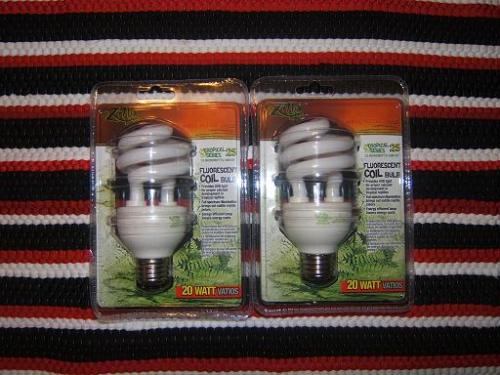
Heating
Now that I got rid of the incandescent bulbs, I also got rid of the heat that they provide. This means that I will have to find an alternative way to provide heat for the snakes.
I investigated several different products to determine what would be best for me. I looked at:
ceramic heat emitters (100 watts apiece - ouch! - out of the question)
Flexwatt heat tape (20 watts per square foot and priced fair although potentially dangerous)
heating pads (8" x 18", 24 watts apiece, sometimes a little pricey)
radiant heat pads (several wattages and too pricey)
What I wound up choosing was heat coil, since it seems to be versatile and safe. I bought two 11.5 foot cords which are 15 watts each for $28
Since none of these products can regulate heat on their own and can get too hot for the snakes, they must be controlled manually with a rheostat.
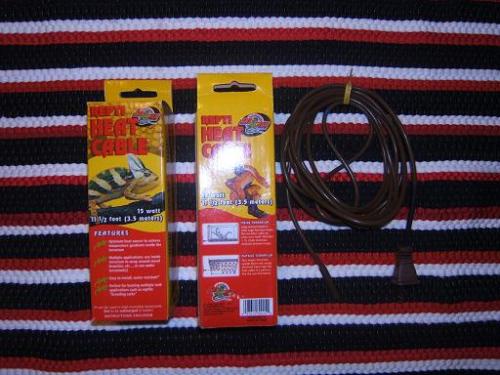
The rheostat
To adjust the heat output of the heating coil (aka "heat rope"), I decided to use a rheostat.
A rheostat and a thermostat are different. A thermostat will turn a heating device on when the temperature is below the setpoint and will turn it off when above the heat setpoint. A rheostat acts more like a dimmer switch, where it will reduce the current going to the heating device. This allows for even heating, since it stays on the entire time. It can also be adjusted to provide the exact temperature that I want in the enclosure.
The rheostat was $17 online.
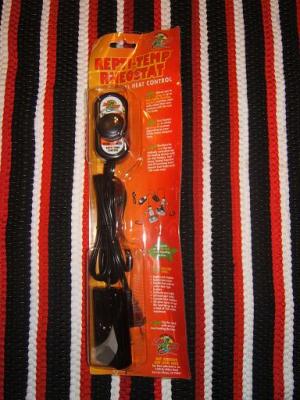
Putting it all together
Now that I have everything, it's time to put it all together and make it work.
The lights were replaced and I put mesh over the front of the dome lights so the snakes can't somehow break the CFL's. The lights are controlled by a light timer set to a 12 hour on/12 hour off cycle.
I tested the heat coil and rheostat on my kitchen counter to get the heating temperature correct. Then, I ran the heat coil into the pen and fastened it into place with some duct tape. I coiled the heat coil under the area where the light shines and placed a piece of rubber matting over it for safety. I duct-taped the mat down so it wouldn't move.
The rheostat was mounted to the side of the pen with all the other controls and both heat coils were plugged it. The rheostat is controlled by a second light timer on a 18 hour on/6 hour off cycle.
After I was finished with installing the new system, I covered everything over with some paper. The paper makes the cage much easier to keep clean. This week, it's paper grocery bags and masking tape. I prefer newspaper, but I was out.
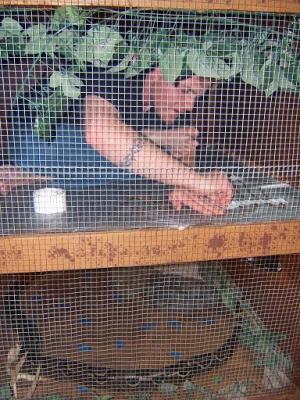

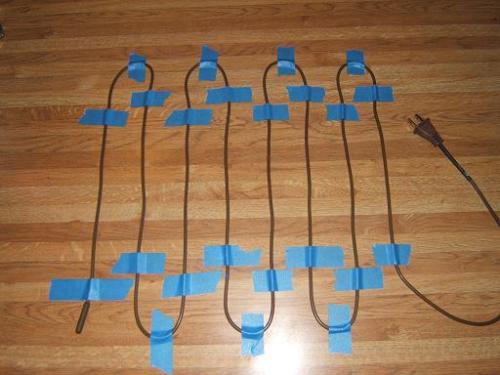
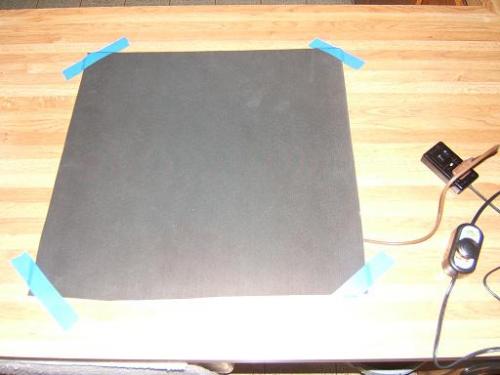
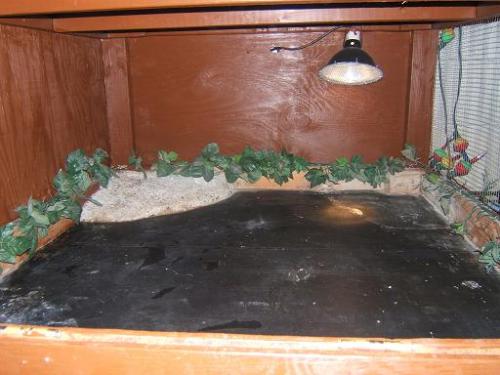
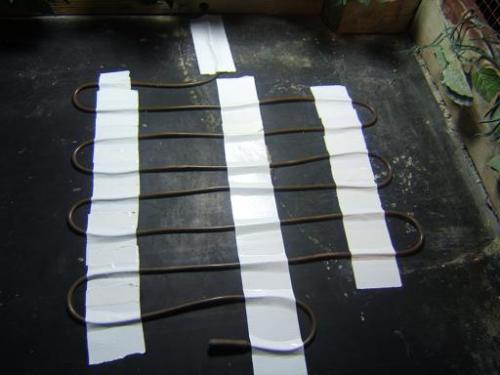
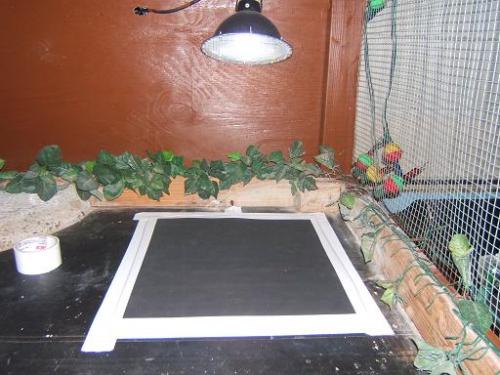

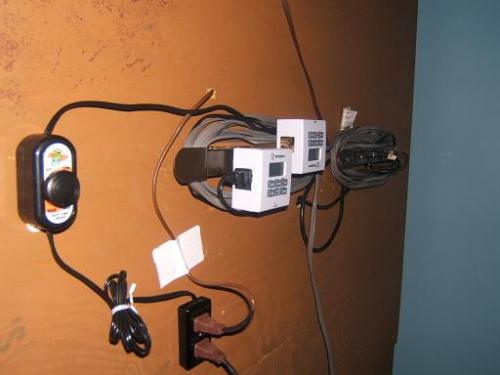
Fun with algebra....
To calculate the energy consumption of a device per day, I used this equation:
a (b/1000) x c = d
a = the number of like devices (in my case, either lights or heat coil)
b = the wattage of an individual device
c = number of hours it is on per day
d = this is the answer, equal to the amount of kWh (kilowatt hours) used per day
The old setup (2 60W incandescents):
2 (60/1000) x 12 = 1.44 kWh per day
1.44 x 365 = 525.6 kWh per year
The new setup (2 20W CFL's, 2 15W heat coils)
2 (20/1000) x 12 = 0.48 kWh per day
2 (15/1000) x 18 = 0.54 kWh per day
365 (0.48 + 0.54) = 372.3 kWh per year
My energy savings:
- per day: 0.42 kWh per day
- per year: 153.3 kWh per year
I think that's pretty good.
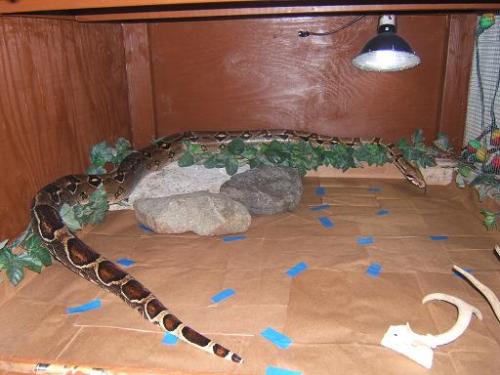
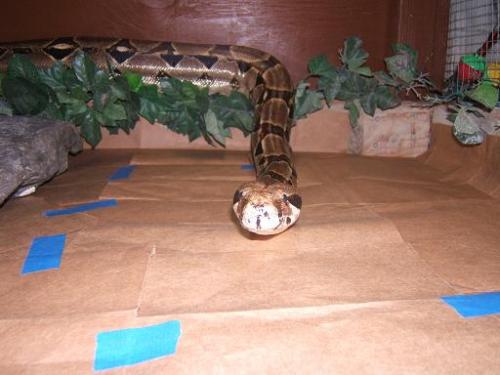
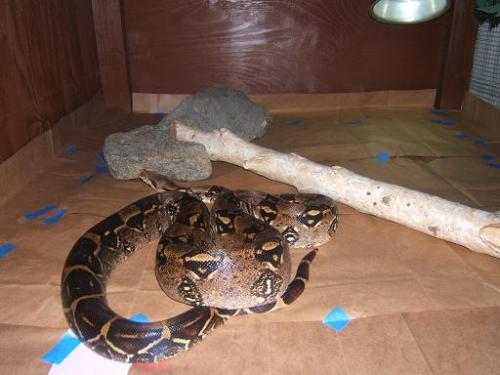
The end
I'm pretty happy with the results of this project.
The boas seem happy with the new setup, and I'm thrilled that I will be saving energy with the new system. Making energy-saving choices like these can help to save reptile owners a lot of money over the long-term. It's fun to have reptiles, and it doesn't have to bankrupt you.




